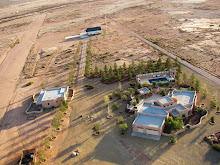The concept of low level aviation is not a new idea, it is practiced by the military and aerial firefighters on a regular basis. It is an activity weight shift control aircraft pilots have engaged in for many years and since the inclusion of these aircraft into the Light Sport Aircraft category the FAA has acknowledged low level flying by exempting these aircraft from minimum altitude requirements. It recognizes the fact that weight shift control aircraft (commonly know as trikes) are frequently flown at less than the minimum altitude of 500 ft, found in the regulations. In fact the altitude for many of the pilot maneuvers required by the FAA during pilot certification are carried out at 400’ AGL (practical test standards).
The question then arises is this inherently dangerous? Weight shift control light sport aircraft evolved from hang gliders and without an engine they revert to this mode, large gliders. So the answer would have to be no, the danger does not increase with low level flying. But as with any aviation activity keeping a landing zone within gliding distance is always advisable. In fact, early commercial aviation in the United States was serviced by a series of Intermediate Fields which addressed this specific issue. In addition, low level aviation is clearly not something practiced in congested areas, controlled airspace, or in areas unfamiliar to the pilot. FAA regulations prohibit that sort of activity and unfamiliarity with the terrain can lead to negative interactions with ground based obstructions (power lines, towers, windmills, etc). While the commonly held misconception is that if you let go of the controls the aircraft will crash is false, it is especially true with weight shift control aircraft. Wings are designed and tuned to return to straight and level flight when the controls are released and here is a video demonstrating the stability of these aircraft flying hands off. They also fly fine without an engine (see this video). Weight shift control aircraft also have a built in secondary energy management system. Since the carriage, pilot, and engine are a pendulum below the wing additional energy for landing may be acquired by pulling in on the control bar, storing energy for landing by increasing speed without increasing the throttle. This stored potential energy is translated back into kinetic energy when landing by letting the control bar out when entering ground effect and slowly losing airspeed.
The next question to arise is why fly low? The answer to this question is subjective. For some it may the adrenalin rush gained from skimming along at 5 or 10 ft above the ground. While for others it is the perspective gained from being just above the landscape. We commonly view the world from eye level, about 5-6 ft off the ground, but the perspective changes dramatically when one rises to 15 or 20 feet. One’s perspective of the landscape completely changes the world takes on a completely different view when flying above it. For example this low level aerial view of eroded rock formations in the Animas Valley of New Mexico.
| Gaia's Brain |
Or this multi overlapping image panorama taken while flying up and out of an extinct maar volcanic crater in Arizona. Or this view of erosion features in the San Simon riverbed.
Weight shift control light sport aircraft also make exceptional video platforms and a number of pilots around the world routinely post videos of a variety of flying adventures.
For more information on weight shift control light sport aircraft please visit Trike Pilot Social and read about these interesting aircraft. For more examples of low level aerial images please see the Boot Heel Photo-documentation Project.








Do you or your colleagues fly over the Gila River or Mimbres River in New Mexico? I have several archaeological projects which would benefit from low level aerial photography.
ReplyDeleteSteve Lekson
Lekson@colorado.edu
I have never flown the Gila or Mimbres Rivers, there is so much unexplored areas in the San Simon Valley.
ReplyDeletehttp://theskygypsies.blogspot.com/2010/01/room-with-view.html
http://theskygypsies.blogspot.com/2009/06/cerro-de-trincheras-in-san-simon-valley.html
B Alvarius you need to have some fun and go fly some day!
ReplyDeleteBeen busy with other projects recently, most important is fencing.
ReplyDeletehttp://bloggingfromthebootheel.blogspot.com/2012/12/building-fence-in-new-mexico.html